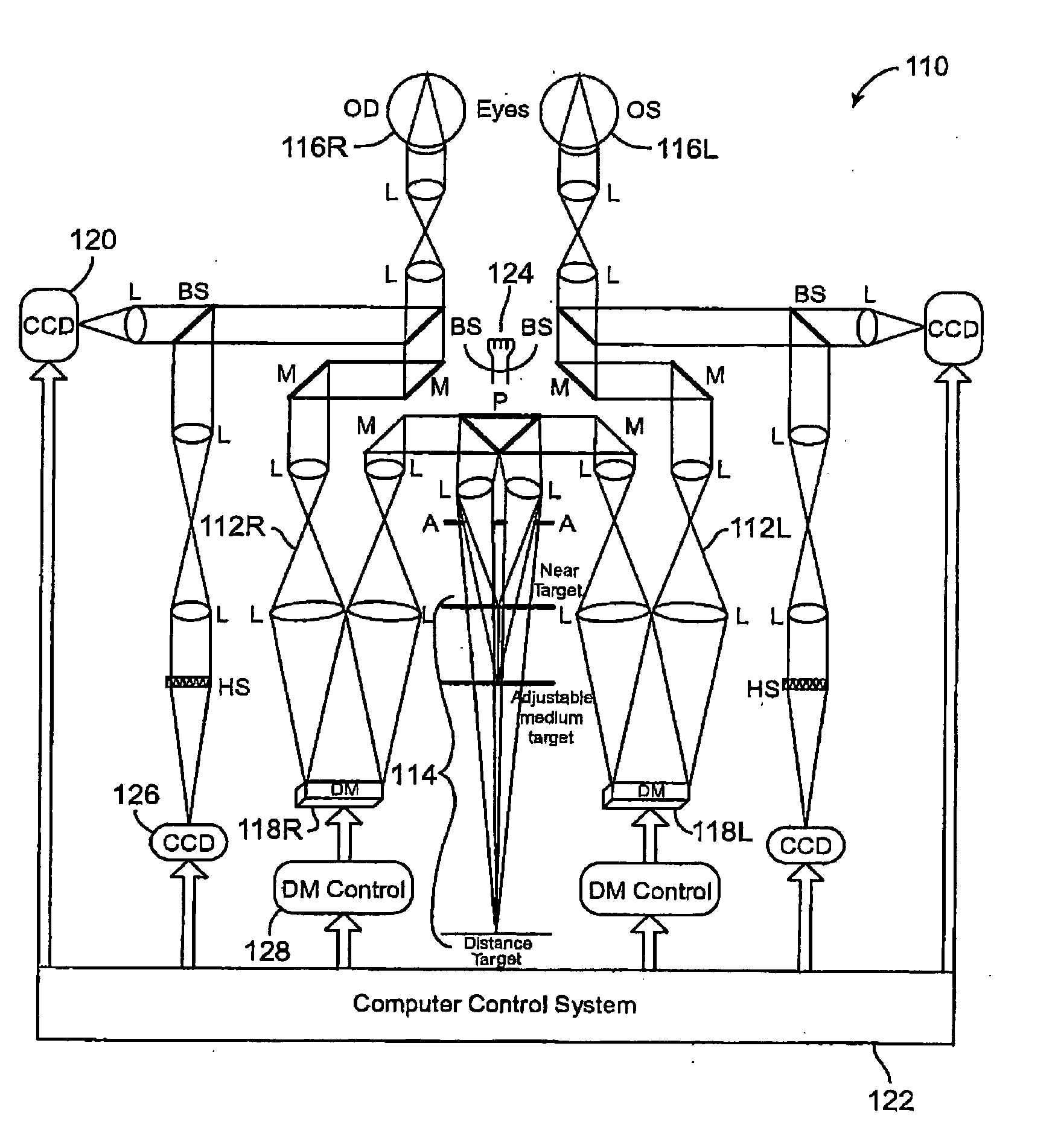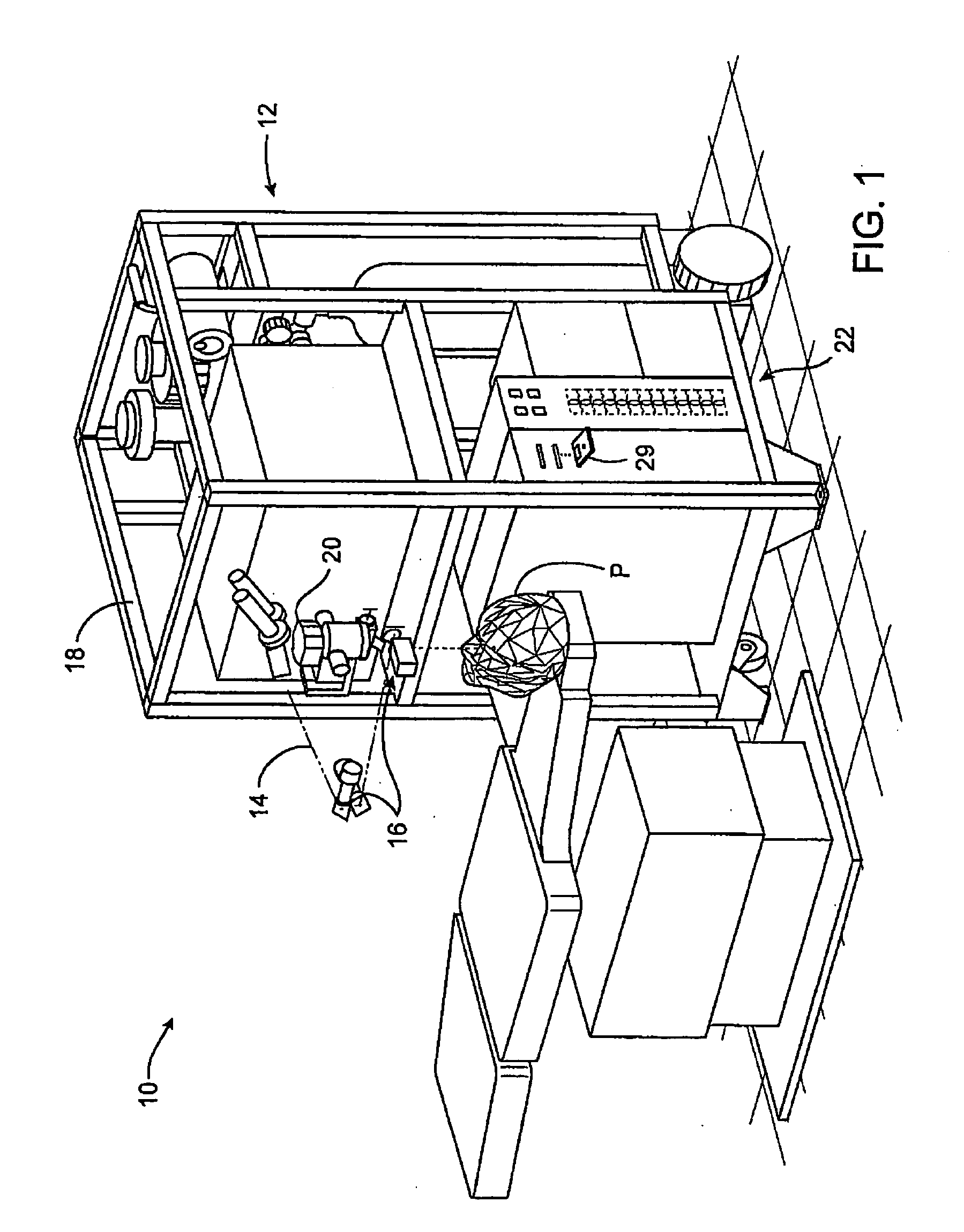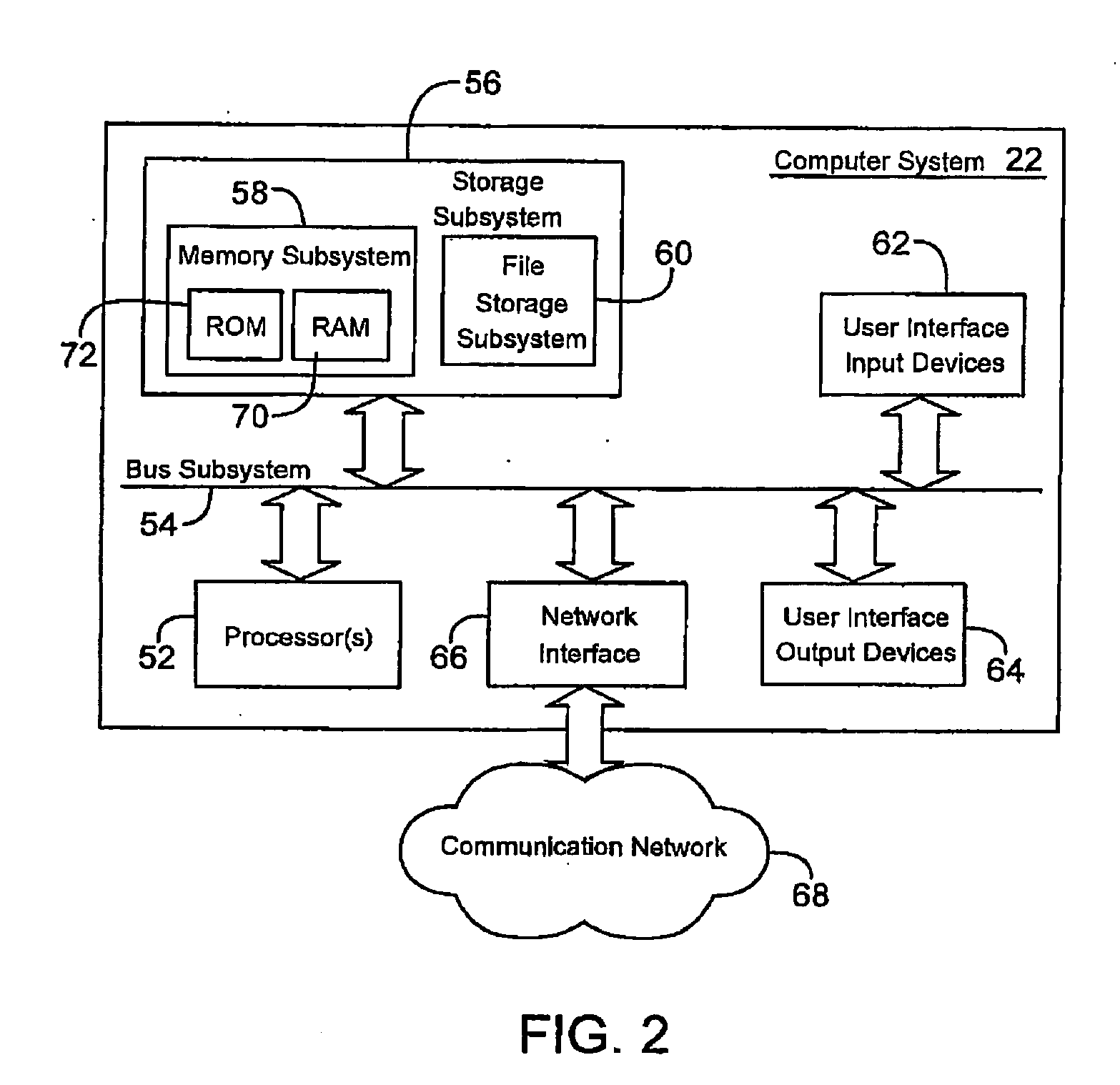Correction of presbyopia using adaptive optics and associated methods
a technology of adaptive optics and correction, applied in the field of optical diagnosis and correction, can solve the problems of loss of ability to focus on objects at near distances, limited ability to change shape, and loss of elastic properties of crystalline lenses, so as to facilitate the derivation of customized presbyopia mitigating prescriptions
- Summary
- Abstract
- Description
- Claims
- Application Information
AI Technical Summary
Benefits of technology
Problems solved by technology
Method used
Image
Examples
Embodiment Construction
[0041] The present invention generally provides devices, systems, and methods for diagnosing, measuring, and treating one or both eyes of a patient. The invention allows customized or general presbyopia-mitigating shapes to be developed and improved. The invention also allows accommodation of an eye to be objectively determined, optionally based on measurements of the ocular optics. The invention also allows candidate refractive eye prescriptions to be evaluated objectively and / or subjectively, often without having to fabricate one or more individual test lenses, even when customized prescriptive shapes are to be implemented and evaluated at a plurality of viewing conditions (such as different viewing distances, lighting conditions, and the like). Hence these inventions will find applications for measuring and treating a variety of refractive or other defects of the eye, including presbyopia, spherical errors (including myopia and hyperopia), regular and irregular astigmatism (inclu...
PUM
 Login to View More
Login to View More Abstract
Description
Claims
Application Information
 Login to View More
Login to View More - R&D
- Intellectual Property
- Life Sciences
- Materials
- Tech Scout
- Unparalleled Data Quality
- Higher Quality Content
- 60% Fewer Hallucinations
Browse by: Latest US Patents, China's latest patents, Technical Efficacy Thesaurus, Application Domain, Technology Topic, Popular Technical Reports.
© 2025 PatSnap. All rights reserved.Legal|Privacy policy|Modern Slavery Act Transparency Statement|Sitemap|About US| Contact US: help@patsnap.com



